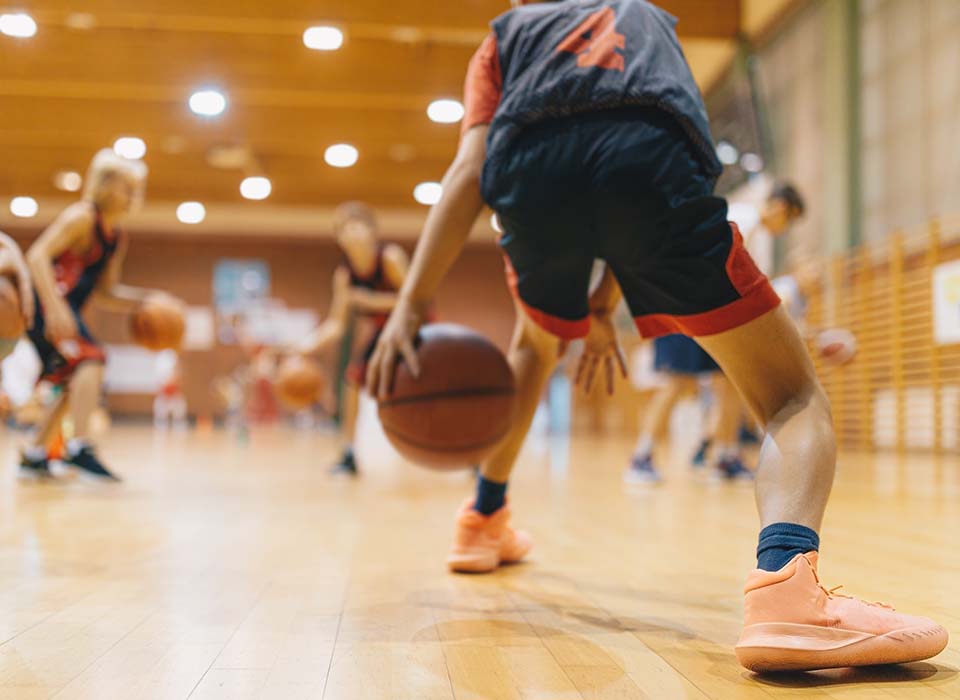Many people play basketball, including professional athletes, student athletes and those who play in their leisure time. As with any sport, there is a risk of injury while playing. The whole body is used while playing basketball, so it is important to take precautions against injury like stretching before and after playing. It is also important to gradually train to be in proper shape. If you are injured, do not return to play until fully healed to prevent reinjury.
Wrist and Hand Injuries
Basketball includes a lot of passing and catching the ball, so hand and wrist injuries are inevitable. The most common hand injury is a jammed finger which occurs when the ball hits the end of the finger. This injury causes the finger to swell at a single joint and can be very painful. The best way to prevent a jammed finger is to keep your eyes on the ball when passing or catching. A jammed finger is easily treatable by icing it and taping the finger to the one next to it. If pain or swelling lasts longer than a week, seek medical attention.
Sprains
An ankle sprain occurs when a player changes direction quickly and their ankle twists. This injury can happen when a player is running down the court, playing defense, or even landing after jumping up for a rebound. The best way to prevent an ankle sprain is to wear high ankle basketball shoes and to stretch before playing to make sure the muscles are warmed up. Also, try to avoid quickly turning or changing directions to keep the ankle steady. If you do sprain your ankle, the best treatment is RICE: rest, ice, elevation, and compression. Again, if the pain or swelling lasts for longer than about a week, or you’re not able to put weight on the ankle, seek medical attention.
Stress Fractures
Stress fractures are overuse injuries. They commonly occur when there is a rapid increase in training or activity level. If a player’s body is not used to the game or training for the game, the lower legs and feet can be injured. Stress fractures can flare up due to the concrete-like flooring of a basketball court. Overuse injuries typically need to be diagnosed by a medical professional through imaging, like X-rays, so if you are feeling pain in your legs or shins then seek professional help.
Knee Injuries
You can easily injure your knees due to the constant stop-and-go movements in basketball. One of the most common types of knee injuries in basketball players is patellofemoral pain syndrome, or pain behind the kneecap where it meets the femur. Another common injury in the knee is a tear either in the ACL or meniscus. This type of ligament tear is caused by suddenly stopping or altering direction, improperly landing after jumping, or a direct impact with the floor or even another player. If you endure a knee injury, seek medical attention so a doctor can accurately diagnose it with digital imaging and help produce a recovery plan that best fits you and your specific injury.
